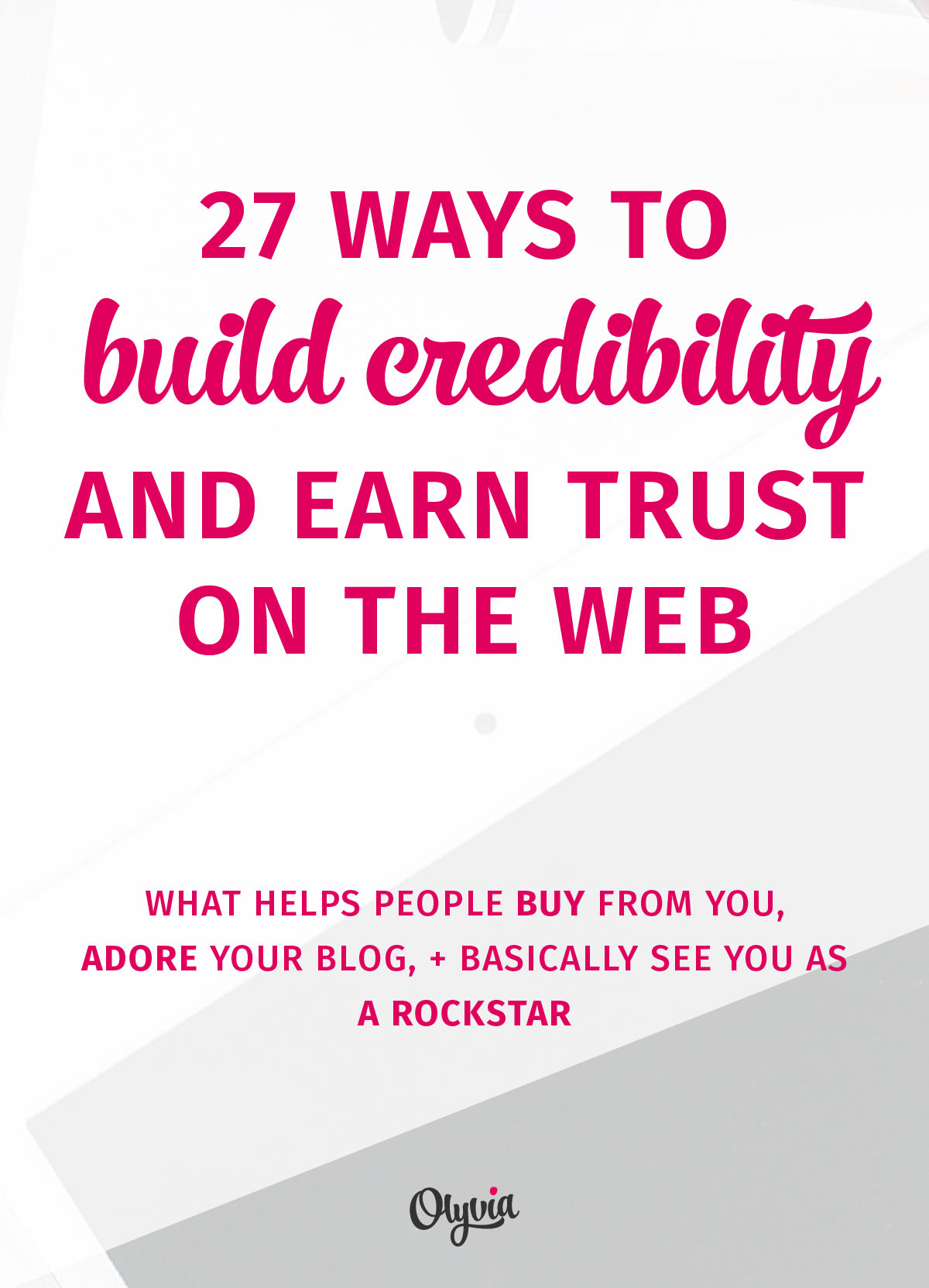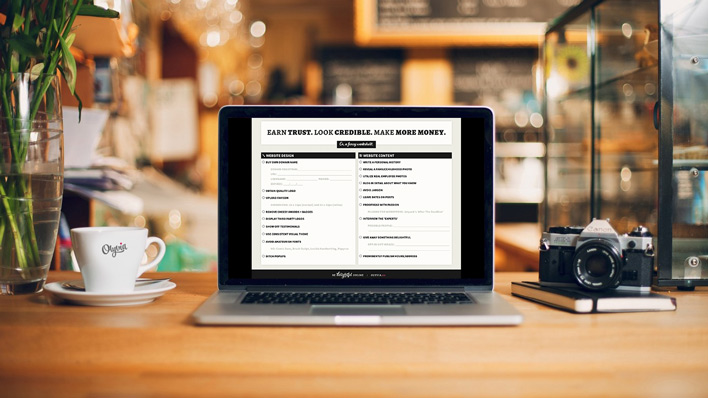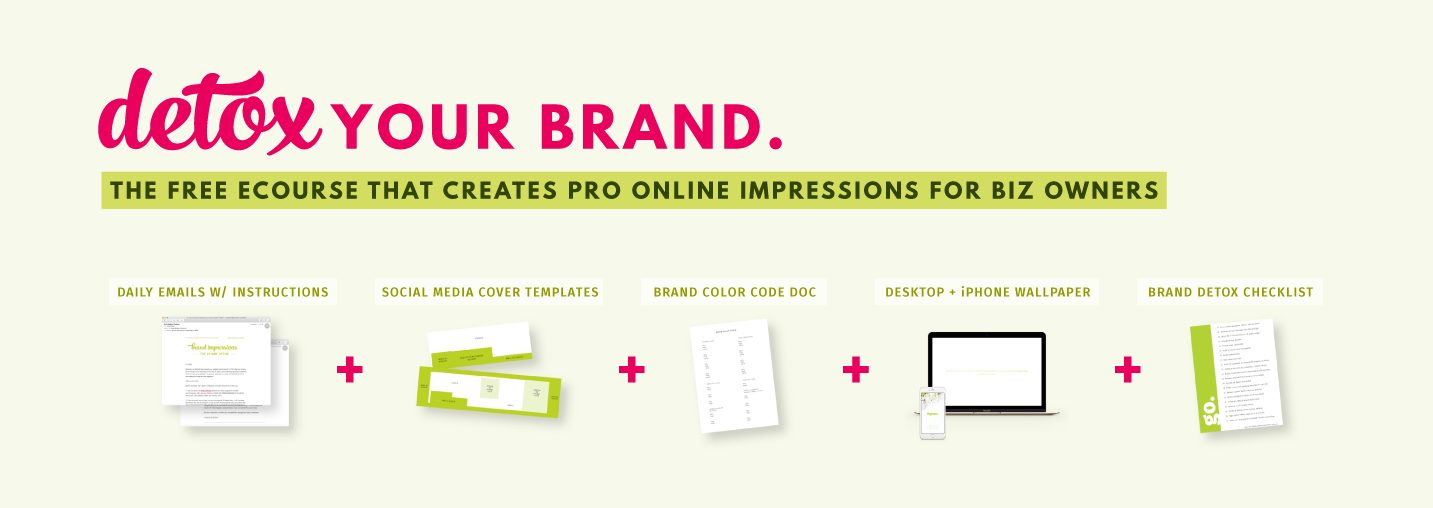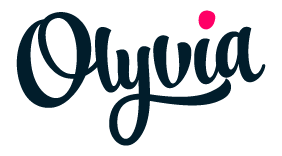27 Ways To Earn People’s Trust And Look Credible Online

It seems that everywhere I go online there are women business owners, entrepreneurs, and business-minded bloggers that are asking the same three questions about their web presence:
“How do I become an influencer?”
“How do I get people to buy from or hire me?”
and
“How do I look like an expert and not an amateur?”
There are a million and one ways to answer these questions, but what they all boil down to is this: to succeed online you must first earn people’s trust.
Without trust you will never be viewed as a legitimate business or a credible authority in your field. You need that impression of legitimacy in order to attract clients and customers, look professional, and earn a reputation as a respectable thought-leader.
But how can you earn trust merely by using the web? If you’re anything like me, you’re crazy busy and forget half of what you need to do right after you read it. You need something that’s not a major undertaking and can be done relatively fast, so let’s start with the small changes that make a sizable impact.
Here are 27 (fairly) effortless things you can do right now to earn more credibility online. Pick at least one and get the ball rolling after you read this post!
WEBSITE DESIGN
1. Buy your own domain
Even if all you can afford right now is your free hosting through WordPress.com or Blogger (though if you can, I seriously recommend Flywheel), publishing it under a domain with your business name will cause your legitimacy quotient to skyrocket. It’s true: doing business at “elegantburpcloths.blogspot.com” just looks tacky.
You can use Bluehost or Namecheap for this.
2. Obtain a quality logo
A cheap-looking or amateurish logo is one of the first signals to people that you aren’t a serious operation — and can’t fully be trusted. You don’t need to go into debt for your design, but remember: you do get what you pay for. (In other words? Avoid Fiverr and don’t DIY it in Microsoft Word.)
3. Upload a favicon
Those tiny images that appear on each browser tab or in the web address bar may seem completely insignificant, but they tell people you have a “real,” professional website. Not having one gives people reason to be wary of your site. (And of you.) Marianne of Design Your Own Lovely Blog has a handy tutorial here on creating + uploading your own favicon.
4. Remove cheesy awards and badges
Plastering your sidebar with homemade “June 2009 Biz Blogger of the Month!” awards by no-name blogs actually detracts from your credibility. If you must feature an award or badge, choose only one or two — and make sure they’re super (and I mean duper) significant.
5. Display 3rd party logos
When people see logos of places you’ve been featured or clients for whom you’ve worked, they perceive you as someone with more prestige and clout than someone without them. For the greatest benefit, put them somewhere with the most visibility: your header or sidebar.
6. Show off your testimonials
There’s little that’s more convincing to someone considering hiring you than to know that others think you’re worth every penny. Good testimonials do that for you, lady, so don’t be too shy to ask for them OR post them!
7. Commit to a consistent visual theme
Continuity and consistency breeds trust. This means the same colors, fonts, and font sizes that are used on one page of your site should be used on the next page as well. Blog post graphics should all have a consistent style, too. (See how Regina does it — she’s superb at this.)
8. Avoid amateurish fonts
Fonts like Comic Sans evoke, well, ugly web cartoons and childish scrawl. They’re OK for something like a dingy video game parlor for tweens; they’re not OK for any business that you want to look attractive and reputable.
9. Ditch the popups
I’ve talked about this before. Popups are a widely hated marketing tactic that exerts control over visitors and disrupts their (formerly pleasant) website experience. This means one thing: their appearance instantly alerts people’s sleaze sensors.
WEBSITE CONTENT
10. Write a personal history
Whether a few sentences or a few paragraphs, personalizing your history and the history of your business helps humanize you. People tend to trust humans; they have a hard time trusting businesses. (Especially one they only know through the web.)
11. Reveal a family/childhood photo
A personal story is a good start, but adding a picture to prove that you’re a regular, approachable person just like everyone else — as opposed to a greasy money monger or snooty, out of touch billionaire — is priceless. A family shot or old photos of you (yep, even that embarrassing one from high school) are perfect. See how Kriss did it.
12. Utilize real employee photos
If people work for you, do NOT buy stock photos of people sitting around a fancy conference table and stick them on your website. Stock photos are always obvious, and to most they indicate that you have something to hide.
13. Blog in detail about what you know
Many business owners avoid sharing their expertise in fear that no one will hire them after getting the information for free. The truth? People are more likely to hire you after seeing that you do know what you’re talking about and can actually deliver the goods.
14. Avoid jargon
I’ve read well over a hundred books, “whitepapers,” and articles about small business, online marketing, and reputation management. Yet, my eyes STILL glaze over when I see acronyms like ORM and UVP or jargon like ideation, scalable, and verticals. You may think you’re setting yourself up as an authority when you use big words, but really it just makes people feel uncomfortable and frustrated.
15. Leave dates on blog posts
There’s a growing trend among some marketing “experts” that encourages people to go in and remove dates off their blog posts. Supposedly that way you’ll always give the impression of being relevant. Don’t buy it, though. People want to see dates; not having one not only does a disservice to your readers, it also looks scammy.
(P.S. You don’t need to have dates in your actual URL — just near the title on the blog post itself!)
16. Proofread with passion
Missspeling words all over teh place is a sign of sloppines and uneducashion. To be viewed as a credible, intelligent businesswoman, be sure to spellcheck and edit everything you publish AT LEAST twice. (If you’re not confident in this area, you may want to consider using a service like Grammarly to act as your personal editor.)
17. Interview “the experts”
Associating with well-known entrepreneurs, business owners, and bloggers related to your industry is a proven way to positively influence others’ impression of your own business. “Oh, she was able to feature Deb Perelman of the Smitten Kitchen on her blog?! Wow, she must be a rising star, too.”
18. Give away something delightful
When you run a business, everyone knows your main goal online is to support and grow that business. In other words, you’re trying to make money! Like it or not, this instantly reduces your likability a slight notch or two. Hopefully, though, you’re a genuinely good person who cares about your customers and clients, too. If so, prove it (and combat that natural distrust) by giving back via a free and valuable gift. I was thrilled with Nathalie Lussier’s 30 day list building challenge.
19. Don’t be secretive with your hours and address
Brick & mortar businesses that don’t make it easy for people to know when they’re open or where they’re located give off a shady vibe. Online businesses also gain more legitimacy by publishing official working hours. Footers and contact pages are excellent locations for this information.
SOCIAL MEDIA
20. Post somewhere regularly
What’s worse than no social media presence? One that looks like it was abandoned months ago. It’s OK if you realize can’t keep up with all of the social networks, but you do need to choose one major place where you remain active. You should be sharing something at least a few times a week so people remember you and view you as thriving + engaged.
21. Share authoritative content
You are judged by the content you share. Attach your brand to sketchy websites and questionable sources and you will soon be seen as disreputable. Learn the best places to go for info and refer to them when you need a source. (For instance, Mashable is fab for social media news and Entrepreneur is trusted for business news & advice for entrepreneurs).
22. Upload a profile photo
Not having a face — or at least a logo — to match the name is disconcerting for people. (Are you an alien? A smurf? A big purple dinosaur?) Very few will connect or interact with you if you’re just a big red pin on Pinterest or a gray shadow on LinkedIn. Come out from behind the curtain!
23. Chat on Twitter
If you choose to be active on Twitter, there are basically two paths you can take: act like an automaton that does nothing but share headlines, links, and famous quotes or act like, well, a person. Those who earn the trust of others will do the latter, which means you should take time to hang out and chat, make personal remarks, share some useful or inspiring content, and essentially be real. Someone who excels at this is the lovely @kayla_hollatz.
24. Sign up on LinkedIn
Many mistakenly believe that LinkedIn is only for people seeking to be hired on somewhere, when in fact it’s for almost everyone. If you make money of any sort, whether you’re a tennis instructor, Etsy seller, makeup artist, or simply have a monetized blog, you should have a presence on LinkedIn for the sake of a top-notch professional image. You don’t have to spend much time there if your target audience doesn’t use it, but you should update it from time to time (as you would a resume).
25. Add descriptions to all of your Pinterest boards
If you’re too lazy to put a description on your Pinterest business account boards, you’re probably too lazy to do a thorough job working for someone, too. (Unfair assumption? Perhaps, but it’s one people unconsciously make all the time, so don’t you dare give them the opportunity!)
26. Pin consistent images
This goes back to the visual consistency point I made up above. Are you an interior designer specializing in American Western rustic decor? Then you shouldn’t pin anything that contradicts that image. Shabby chic? French country? Early American colonial? No way, m’dear. Embrace your niche and refuse to be a mediocre source for everybody.
27. Keep your Pinterest boards professional
Using Pinterest for your business means it’s only for that: your business. It detracts from your online authority when you fill your boards with irrelevant pins that you just happen to like. (A kids’ casual clothing biz shouldn’t have a board filled with women’s wedding dresses you dream about wearing for your vow renewal.) You can be creative, but be sure it ties in to your brand. As an example, I have a board with food & drink, but it’s specifically about classy office party entertaining.
Do you have anything to add to these categories? I only touched on a fraction of the things someone could do to earn people’s trust and up their business cred, so chime in with your thoughts. Let’s make this an even better resource!
I’m eager to hear your ideas below. (And watch for Part 2 of this post where I’ll talk tips about earning legitimacy through Email, Sales, and Etiquette.)
UPDATE: Part 2 can be found at 16 (More!) Ways To Earn People’s Trust And Look Credible Online. I also whipped up a three-page worksheet to accompany both posts, which you can download for FREE below:

>> DOWNLOAD THE ‘EARN TRUST’ WORKSHEET HERE (no opt-in)
Enjoy!

(Chief Olyvia)
P.S. If you liked this post and are looking for a way to support it, I’d be thrilled if you Pinned it. 🙂 Thank you kindly!




